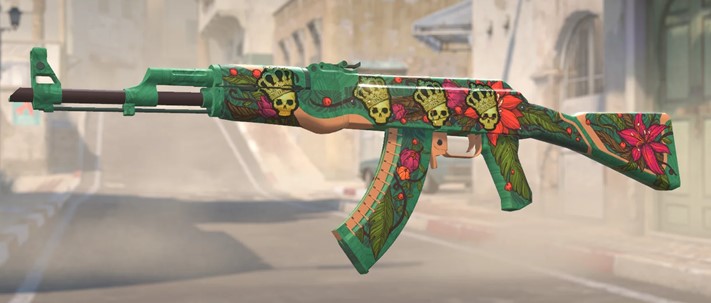How to Create CS2 Skins

Ever wondered how custom Counter-Strike 2 (CS2) skins come to life? If you’ve ever seen a beautifully designed AK-47 skin or a sleek-looking knife and thought, I wish I could make something like that, then you’re in the right place.
Creating CS2 skins is a mix of creativity, technical know-how, and understanding the in-game economy.
What are CS2 Skins?
CS2 skins are purely cosmetic, meaning they don’t impact gameplay. However, their value can vary significantly based on factors like rarity, design, and demand in the trading community. The Steam Workshop allows creators to submit skins, and if accepted, these skins can become a part of the game officially—leading to potential earnings.
If you’re designing CSGO 2 skins with potential sales in mind, research what skins are trending on trading platforms. This can help you craft designs that appeal to the community.
Before you dive into creating skins, familiarize yourself with how the system works. Check out the official CS2 Workshop guidelines for details on what Valve looks for in submissions.
What You Need to Get Started
To design your own CS2 skin, you’ll need:
- A 3D modeling program – Blender, Photoshop, or GIMP are commonly used for designing textures.
- Valve’s CS2 Workbench – This in-game tool lets you test and apply your skin designs.
- Basic knowledge of textures and UV mapping – Since weapons have specific layouts, understanding how textures wrap around a model is crucial.
If you’re serious about designing a standout skin, it helps to look at existing successful skins to understand trends and what players like.
Step-by-Step Guide to Creating CS2 Skins

1. Choose Your Weapon
Decide which weapon you want to create a skin for. Popular choices include the AK-47, M4A4, and AWP since they have a high demand in the CS2 community.
The more popular the weapon, the higher the potential engagement with your skin.
2. Download the Weapon’s UV Map
UV maps are the blueprints of how textures are applied to in-game models. You can find these in CS2’s Workshop tools or on community forums where creators share resources.
- Open CS2 Workbench
- Find the UV map of your selected weapon
- Export it for editing in Photoshop, GIMP, or another editing software
3. Create Your Design
This is where your creativity comes in. You can go for clean minimalistic looks, detailed artwork, or abstract patterns. Here are some key tips:
- Stay within the model’s guidelines – The skin should align with the weapon’s design and structure.
- Use layers – Keeping different elements on separate layers makes editing easier.
- Experiment with patterns and color palettes – Bright colors and intricate details often perform well.
4. Apply the Skin in CS2 Workbench
Once your design is ready, import it into CS2 Workbench:
- Open CS2 and launch the Workshop tools
- Load the weapon model and apply your skin texture
- Adjust wear levels, finishes, and patterns to see how the skin looks in different conditions
CS2 allows you to preview the skin with varying levels of wear (Factory New, Battle-Scarred, etc.), so tweak accordingly to ensure it looks good across all conditions.
5. Test In-Game
Before you submit, test how the skin looks under different lighting conditions in the game. The last thing you want is a texture that looks amazing in Photoshop but doesn’t translate well into CS2’s environment.
6. Submit to the Steam Workshop
If you’re happy with your design:
- Go to the CS2 Steam Workshop
- Upload your skin, including high-quality images and a compelling description
- Promote your skin on social media and CS2 forums to gain traction
Valve periodically selects skins from the Workshop to be added to the game officially. If yours gets picked, it can become a real CS2 skin that players can use and trade.
Monetizing Your CS2 Skins
If your design gets accepted by Valve, you’ll receive a percentage of the revenue when players purchase or trade your skin. However, even if your skin isn’t chosen officially, you can still sell it on third-party marketplaces.
The CS2 skin economy is massive, with rare skins selling for thousands of dollars. Long gone are the days of cassette arcade, gaming skins have evolved into digital assets worth real money.
Conclusion
Creating CS2 skins is a rewarding mix of art, design, and in-game mechanics. Whether you’re designing for fun, recognition, or profit, the process takes patience and creativity. Start with small projects, experiment with different styles, and engage with the CS2 community to improve your skills.

